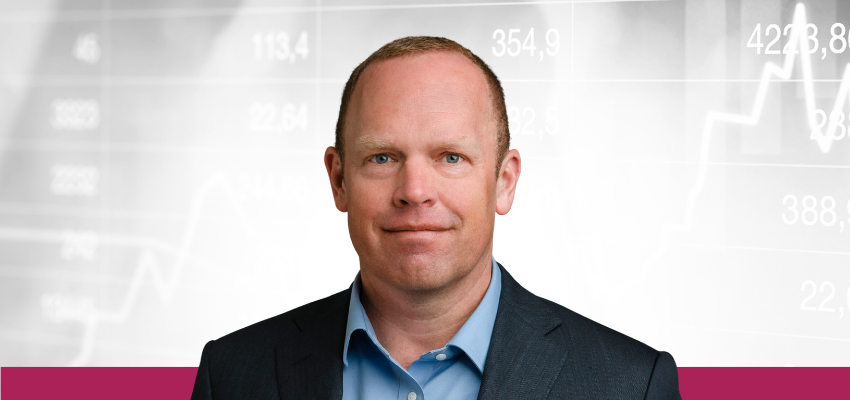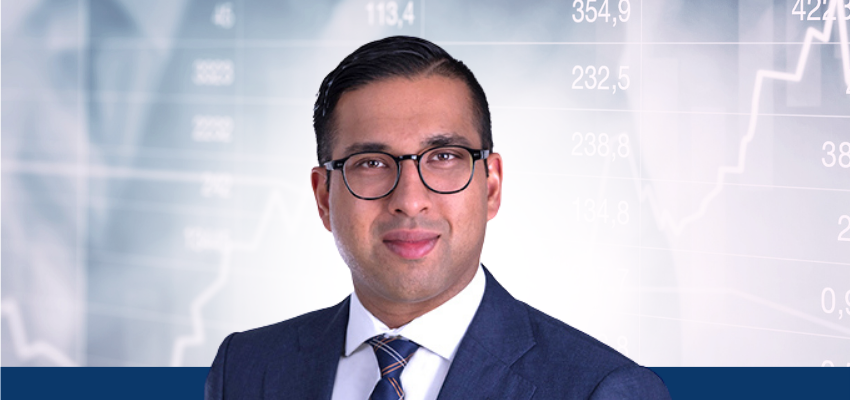Dear Co-investors,
Thank you for your continued partnership in the Pender Credit Opportunities Fund. For the quarter the Fund returned 15.2%1, bringing the Fund’s since inception return to 6.8%. The Fund's benchmark2 returned 2.4% for the quarter and 7.1% YTD. We completed two workouts this quarter that meaningfully contributed to results. In this letter, we will recap key winners and losers for the quarter, then turn to our outlook and the compelling opportunities we see ahead. We are energized by the pipeline and confident in our ability to continue compounding capital with discipline and edge.
Restructuring Workouts Performance
Wolfspeed, Inc. (WOLF) is a US semiconductor company focused on silicon carbide—the key material behind next-generation power systems. On June 30, 2025, the company entered a pre-packaged bankruptcy and, by October 1, emerged with a stronger balance sheet: roughly ~$1.3 billion of gross debt and ~$800 million of net debt. Together with other creditors and Renesas, we are converting our debt claims into an equity stake exceeding 80%. Our position has already appreciated more than 50% from Q2 levels. We like where we stand. The restructuring implies an enterprise value of about $2.5 billion—well below Wolfspeed’s historical peak of $8–10 billion. The company carries a $12 billion backlog, and as production ramps, we project $2.5–3.0 billion in revenue by FY2028. On a conservative 3x EV/Sales multiple, we believe that points to $7.5–9 billion of equity value, suggesting recoveries well above par. With the overhang of restructuring removed, investors can refocus on Wolfspeed’s expanding commercial pipeline and the growth ahead.3
Beyond Meat (BYND), a pioneer in plant-based protein and best known for the Beyond Burger, faced a tough stretch. Weakening demand and rising costs accelerated cash burn, tightened liquidity and left a $1.15 billion maturity looming in 2027. To stabilize the business, the company executed an out-of-court debt-for-equity exchange that reduced balance-sheet debt by roughly 90%. Our holding, which was priced at –54% at the start of the quarter, rebounded to a 150%+ return by October. We are now in the process of exiting the position. As members of the restructuring steering committee, we helped guide a deleveraging that reset the capital structure and positioned the company for a more sustainable path forward.
Our Q2 commentary includes reference to their workouts.
Top Contributors
McDermott International Ltd.(MCDIF), the formerly bankrupt and now resurgent engineering and construction firm focused on offshore infrastructure, has only recently made its financials public. We’ve followed the company for five years, and a visit to its Houston headquarters reinforced our conviction. Strong results and improving fundamentals have driven the post-reorganization equity to rally more than 100% off the lows and over 35% above our cost, contributing about 170 bps to performance in the quarter. We continue to hold the position, believing the shares still trade at a deeply discounted valuation relative to McDermott’s ~$20 billion backlog.
Esperion Therapeutics Inc (ESPR) is a specialized pharmaceutical company leading in non-statin cholesterol therapies, marketing Nexletol and Nexlizet—drugs shown in FDA-approved studies to cut all types of cardiac events by about 20%. Launched during the pandemic, adoption was slow, but prescriptions rose roughly 50% over the past year. We forecast 2025 sales above $400 million and, applying a conservative 3x sales multiple and adding ~$144 million in cash, see fair value north of $1.2 billion. Approval in Japan—the second-largest market after the U.S.—appears near, and management has extended the patent runway to 2040 through agreements with generic manufacturers. We own both the convertible bonds and the equity; the bonds are up ~20% and the equity more than 100%, adding over 600 bps to performance in the quarter We remain invested given the still-low valuation, rising prescription momentum, international expansion, and a credible path to M&A interest.
Fluence Energy (FLNC),our grid-scale battery storage holding, has rallied sharply off multi-year lows. The company sits at the nexus of two powerful forces: surging AI-driven electricity demand and the grid’s physical constraints. As energy use doubles every two to three years, the bottleneck isn’t chips—it’s power. Fluence’s batteries and software directly address that gap, supporting an estimated $8.5 billion TAM by 2030. With roughly $2.5 billion of FY2026 revenue already in backlog—covering about 80–90% of guidance—fast-growing ARR, and improving, policy-supported margins, we still see attractive upside even after a 100%+ move. This position contributed about 220 bps to performance in the quarter. We have trimmed one-third of the position for risk management.
Detractors
New Fortress Energy Inc. (NFE) is a vertically integrated LNG platform with assets across Puerto Rico, Mexico, Brazil, and Nicaragua, supported by long-term contracts. Rapid expansion funded by more than $8.9 billion of debt has created near-term strain: liquidity stands near $450 million and $510 million comes due in September 2026, with bonds in the 20s signaling a high likelihood of restructuring. Despite this pressure, we like the position given NFE’s hard-to-replicate infrastructure, demonstrated value—illustrated by a recent ~$4.5 billion Puerto Rico contract—and projects in Brazil and Nicaragua nearing completion. Even in a restructuring, we expect strong first-lien recoveries with potential equity upside. While the market is pricing bankruptcy as a certainty, as can be seen from our position detracting about 80 bps in the quarter, the combination of valuable assets, meaningful insider ownership (~40%), and prospective cash-flow growth creates an asymmetric opportunity.
Spirit Airlines Inc. (SAVEQ) is an ultra-low-cost carrier serving price-sensitive travelers across the U.S., Caribbean, and Latin America. We exited our position in the first week of October at a 40% loss after the company filed for Chapter 11 again on August 29—its second bankruptcy in six months—following a default under aircraft lease agreements, detracting over 400 bps from performance in the quarter. In our view, lessors issued the default to block Spirit from taking delivery of dozens of future aircraft. While we still see underlying franchise value and believe the debt could recover, the opacity around operations and the low probability of a standalone emergence led us to exit on risk to reward basis.
Outlook
We remain cautious about certain aspects of the private credit market, particularly regarding its opacity, liquidity challenges, and high valuations. While public BDCs are currently trading at ~25% discounts, many private vehicles continue to mark near par, which presents a potential discrepancy that could indicate underlying risks. As liquidity continues to tighten, we are mindful of the possibility that stress within private credit could gradually impact other areas of the financial system, with regional banks already feeling some effects. While we do not invest in private credit, as our strategy prioritizes transparent, market-priced opportunities that allow us to assess risk in real-time and maintain flexibility in exiting when needed, we are closely monitoring developments in this space for any signs of broader market impact.
Elsewhere corporate bond valuations are tight at the index level. With credit spread hovering around 300bps, broad value looks scarce. That’s exactly why we focus on stressed and distressed credits with idiosyncratic drivers of return. For example, recently, we added Canada-based Algoma Steel. Its bonds sold off ~20% on tariff headlines, yet we see solid downside protection: inventory coverage of ~1.5x, a newly inaugurated, high-tech, low-emissions steel facility valued around $1.7 billion, and a $500 million government support package to navigate the tariff overhang. In our view, that combination creates a compelling risk/reward.
Macro conditions are also turning more supportive. The third quarter of 2025 marked an inflection for rates: the 10-year US Treasury yield, which peaked near 4.8% in January, drifted toward the 4.0% threshold by quarter-end. Further easing would lower the cost of capital and reopen market access—tailwinds that typically benefit stressed and distressed credits.
We’re often asked for our views on the direction of interest rates. Our edge isn’t predicting the next Fed move; it’s investing in businesses that can survive on their own merits. Today, we see durable value in industrials and healthcare—areas many dismiss as “too complex” due to regulation, reimbursement and utilization dynamics. That complexity is precisely where our process, discipline and credit work convert uncertainty into opportunity.
Fund Positioning
The Pender Credit Opportunity Fund yield to maturity at September 30 was 6.09% with current yield of 4.73 The Fund is fully invested with a total of 22 issuers and a 2% cash weight. The fund is invested 43% invested across stressed positions, 26% invested across distressed positions and 29% across our special opportunities bucket.
We remain disciplined and optimistic that our holdings will deliver attractive risk-adjusted returns for our investors.
Thanks,
Parul Garg
October 23, 2025
[1] All Pender performance data points are for Class F of the Fund. Other classes are available. Fees and performance may differ in those other classes. Standard Performance Information for Pender’s Fixed Income Funds may be found here: penderfund.com.
[2] ICE BofA US High Yield Index (USD)
[3] Company filings




